We love capes and so do our customers! We carry a wide variety, from the barely-there style seen in the 1950s to full-length-style cloaks similar to those worn in Victorian times. And of all the clothing we create, the cape is perhaps the most historic. Is that a surprise to you? This week we take a dive into multiple rabbit holes about the cape, a winter accessory that is both attractive and practical.
*Note: while the term “cape” technically refers to outerwear that is hip-length and higher and a “cloak” refers to something more full-length, I will discuss both here and I won’t be too hard and fast about distinguishing between the two.
Cape as old as time
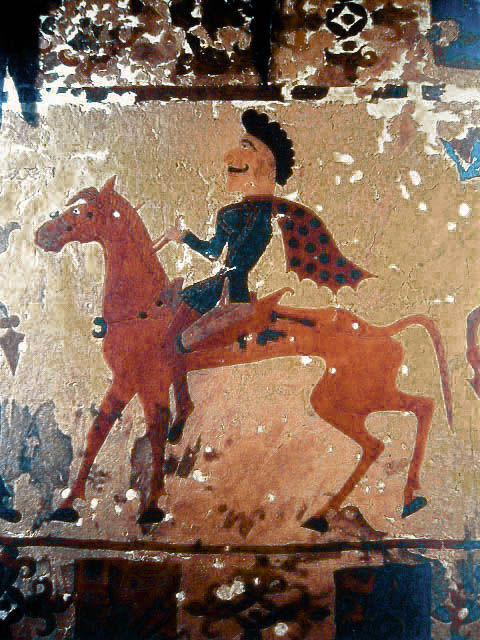
Depictions of people wearing capes date back to at least 300 BCE, which is when the image to the right is dated. I can see why they were an early invention by nomadic tribal folks as they are very useful in keeping the body warm, but also nonconstricting and highly versatile where a coat is not. And it makes sense that a blanket or other type of covering used for warmth would end up playing double duty as clothing during these times.
Capes show up regularly in images through the entire middle ages. I came across a website dedicated to the culture of the middle ages that has an entire page dedicated to images of capes from about 1104 to 1490. Here are a couple of my favorites.
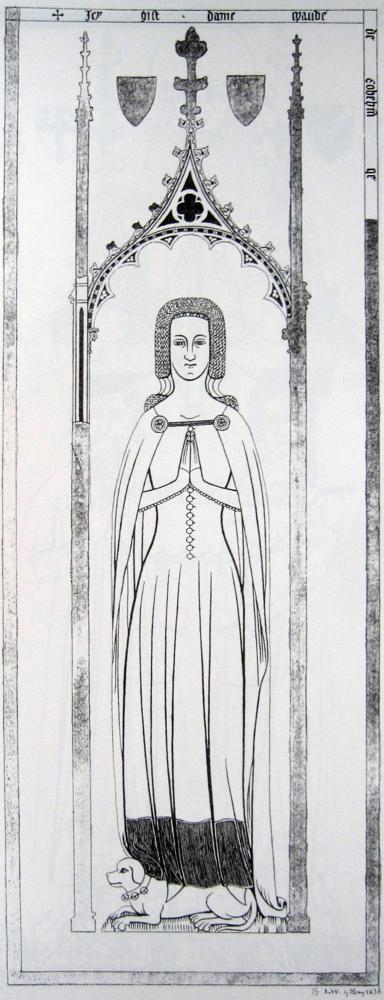
Capes and cloaks as royal symbols
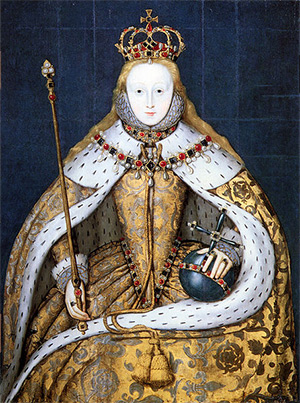
Many readers will be familiar with the image of Queen Elizabeth I to the right and the fact that a grand, fur-trimmed cloak (or “robe”) is a part of the coronation ceremony for British crowns still today. I have always taken this for granted and for this first time decided to investigate the origins of this tradition. Well, I discovered that there is a LOT to learn (For instance, did you know that the same company has been making the royal robes for about FOUR HUNDRED YEARS?) and I will follow this post up with another post about coronation robes in the new year. Is there something that you would like to know or share about coronation robes? Drop it in the comments and I will include it in the post.
Cloaking in Victorian times
In my previous post on winter coats through time, I wrote that I had come across a reference to the 1980s being the “Golden Age” of the coat. Well, if there was a Golden Age of the cape, I think it would be the Victorian Era. There was a wide variety of styles, cuts, lengths, materials, and necklines used. This diversity is not seen in other time periods and one reason was of course, increasing industrialization that allowed designers to get more creative. There were also multiple periods of very full sleeves that prevented a coat from being worn as easily as it was for men. Let’s see what they came up with!
Length
During the Victorian era, the length of a cape varied from one covering just the shoulders to a full-length cloak used for formal events. I have found that the length that was most popular was hip-length or a few inches higher.
Multi-tiered capes
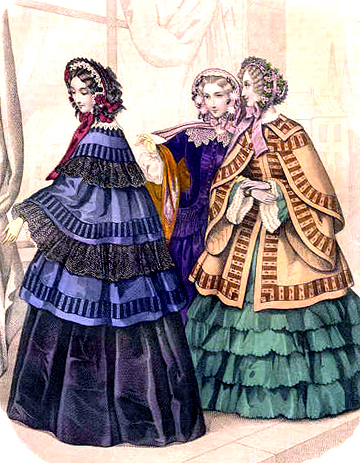
In the late 1800s, the most popular style of cape was the multi-tiered style, with versions for both day and evening use. These capes had multiple layers, usually three: one just at the shoulders, another one ending a few inches longer, and then the bottom layer. According to fashion magazines and manuals, a proper lady would own roughly three such capes.
Given that we are talking about the days of enormous bustles, puffy sleeves, the Merry Widow hat, and hoop skirts, I think it is appropriate that the “go big” attitude of women’s fashion would extend to winter wear as well. Women wanted to be seen, and this is just another example of how they did it.
Get a multi-tiered Victorian cape from Recollections here.
The opera cloak
While there was a variety of capes and cloaks that could be worn with relative freedom of choice for socializing, the Victorian times saw a mandate about what could be worn to the theater. Any respectable person (men and women) being seen enjoying such entertainment would be seen arriving in an opera cloak.
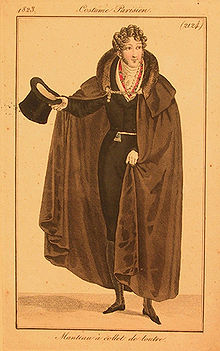
Such a cloak was made with heavy fabric such as velvet and lined with something soft such as silk. And while it would be relatively simply-designed (in contrast to the multi-tiered capes discussed above), it would often be embellished with a long ribbon down the back. A ribbon or rope would secure the front, whereas cloaks worn for other occasions would typically be fastened with buttons.
The Art of Dressing Well, published in 1870 says of such outerwear:
“An opera cloak is a must; however, any cloak or lace shawl should be removed while indoors, so as to better display your gown. White is most fashionable for an opera cloak, but other colors may be worn, provided they don’t clash with your dress. The cloak must be richly embroidered or trimmed. Opera bonnets are optional, and are only worn at operas where full dress is not mandatory. If a bonnet [is worn], the arms and neck should be covered.”
In addition to the coronation robe, opera attire is another brand new topic to me that I discovered in researching this post. Apparently, in Victorian times it was quite specific and prescribed. The opera cloak was just one of many items one would have been expected to have when arriving to a performance and I find that so fascinating! In a day that may find someone wearing flip-flops to a formal gathering, I love thinking that people took a special event so seriously. Something like clothing does so much to create a mood and I can imagine that there were many magical evenings spent at the opera during this time.
Want an opera cloak of your own? Check out our Victorian Velvet Cape.
Dog collar capes
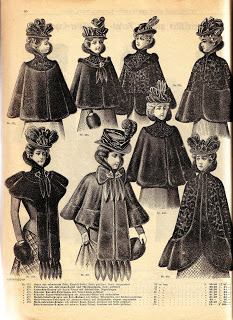
One winter look that is very specific to the late 1800s is that of the dog collar cape. High necklines on dresses were popular at the time, creating a need for outerwear that would prevent the neckline of the dress from poking out. I have always wanted a dress with such a neckline and think that they are so elegant and fierce!
A “dog collar cape” refers to a cape with a high neckline, typically with more height in the back. The capes would have buttoned in the front with buttons extending up the neck as well. They would be one layer or have multiple layers as seen above. I am including some of my favorite examples here.
With all capes, I believe that it was most stylish to have the cape be a contrasting color to the dress being worn underneath.
Just for looks: sheer capes to prevent shoulders from being exposed
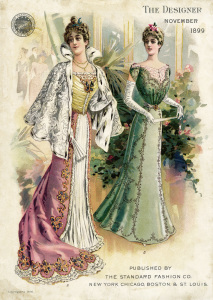
The Art of Dressing Well made sure to address the issue of bare shoulders coming into fashion:
“It is useless to speak against the bare shoulders and arms, as fashion so comparatively demands them, but cover them with warm sleeves and a cape when exposed to the out-door air.”
While today women may happily venture out for a summer evening gathering with bare shoulders and without any type of covering, this would have been extremely improper until even several decades ago. The lace or sheer cape was quite fashionable in Victorian times, worn in the brief period between leaving home and arriving at one’s destination.
This is a look of particular interest for our customers and we create multiple styles. Get ready for spring elegance with one of the following:
Victorian Velvet Lace Ruffled Cape
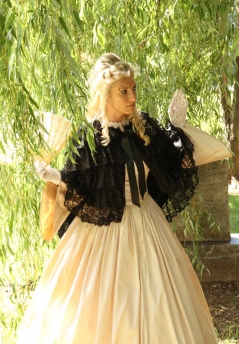
Capes give way to coats
The Jazz Age brought slinkier dresses that required more coverage and capes fell out of style for the most part. As we saw in the post on coats through time, beginning in 1890 more options were available, expanding each year to be the standard for winter. There were exceptions here and there, especially for creating an artistic look or for performers, as seen below, but large fur coats became the trend for many years, until the cape made a cute comeback in a cute era, the 1950s.
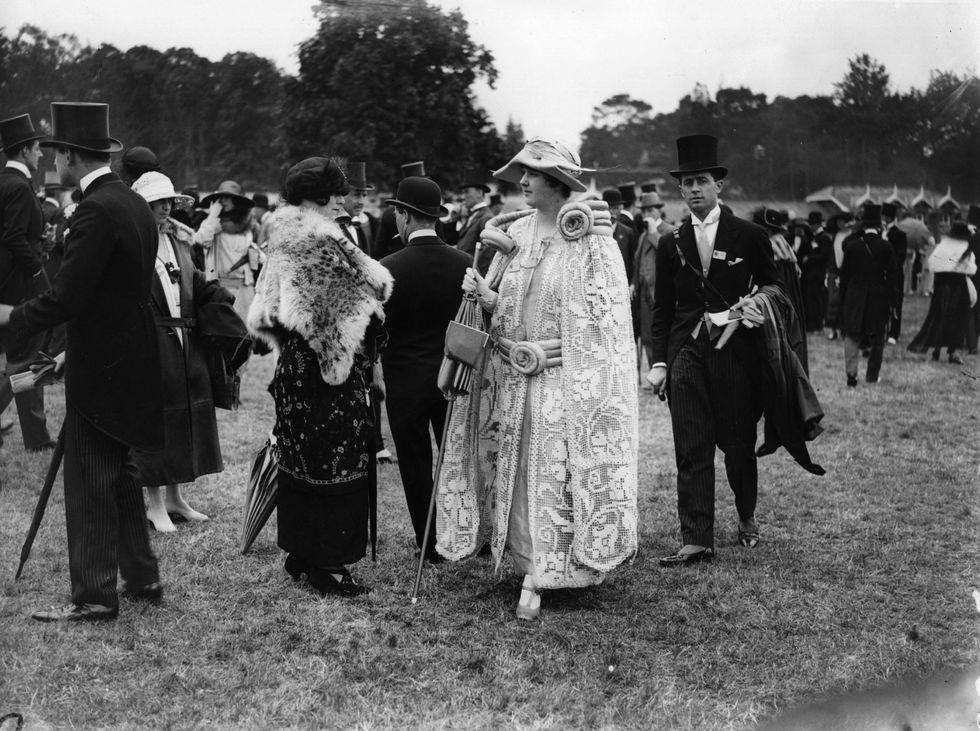
A mid-century revival
The 1950s saw a bit of a comeback for the cape, although in this case, it was a clear example of function over fashion.
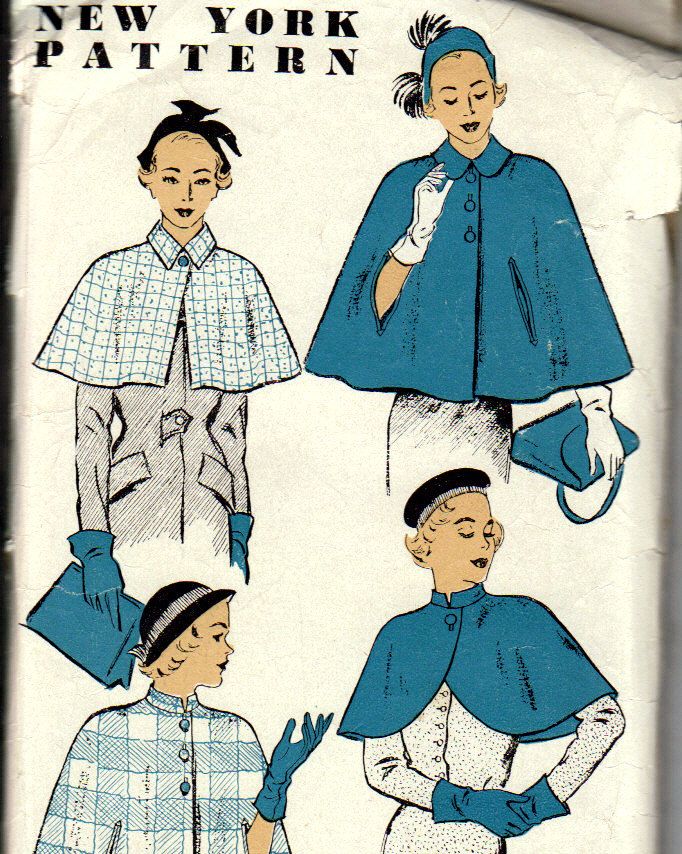
The 1950s were an interesting time for women’s clothing. While the previous three decades had been more focused on freedom of movement and experimenting with trousers, two-piece suits, and shapeless silhouettes, the 1950s saw a return to fitted tops and flared skirts. One might say that there was a lot of “daintiness” in the popular styles, and the cape as an accessory could be included.
The most popular cape look of the 1950s was the barely-covering-the-shoulders look with lacy trim or ruffles. It was paired with a fitted look, often a blouse and pencil skirt. There was also the popular dress and detachable cape in matching colors.
As for fabrics, the short capes of the 1950s would often be made of tweed or cotton. It was also one of the most popular times for the stole, likely inspired by the short cape, or the other way around.
Want to create your own dainty 1950s look this winter? Here is one of our favorite mid-century looks:

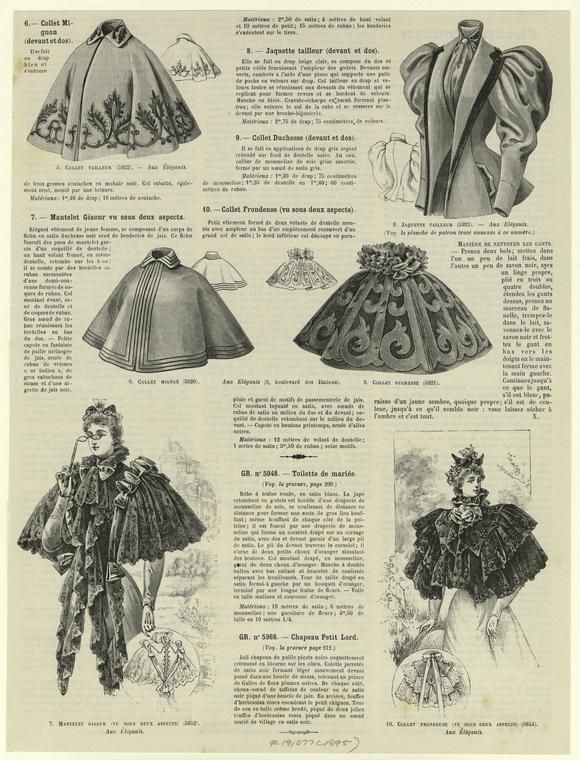

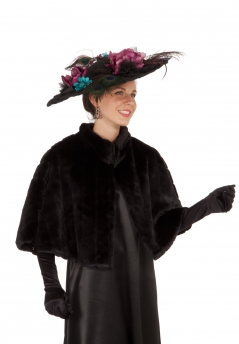





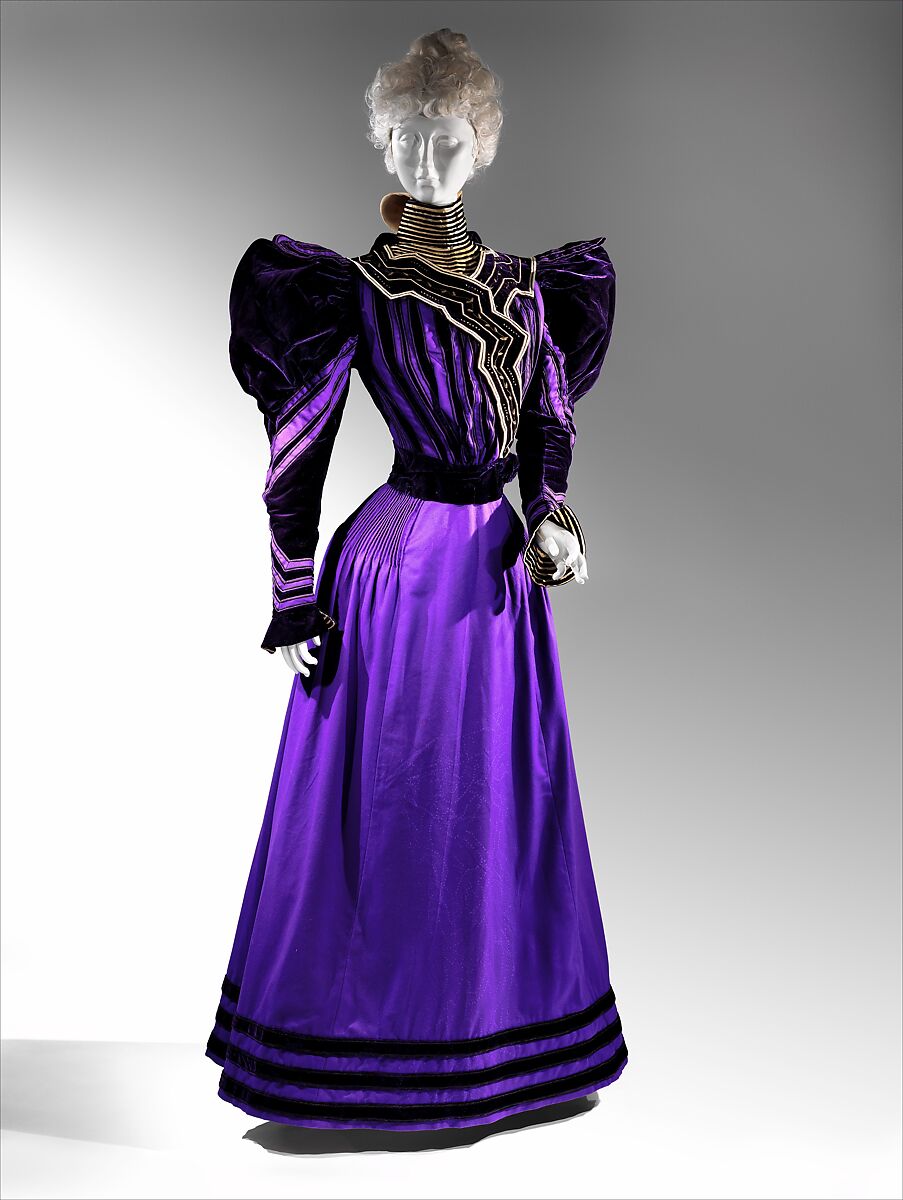

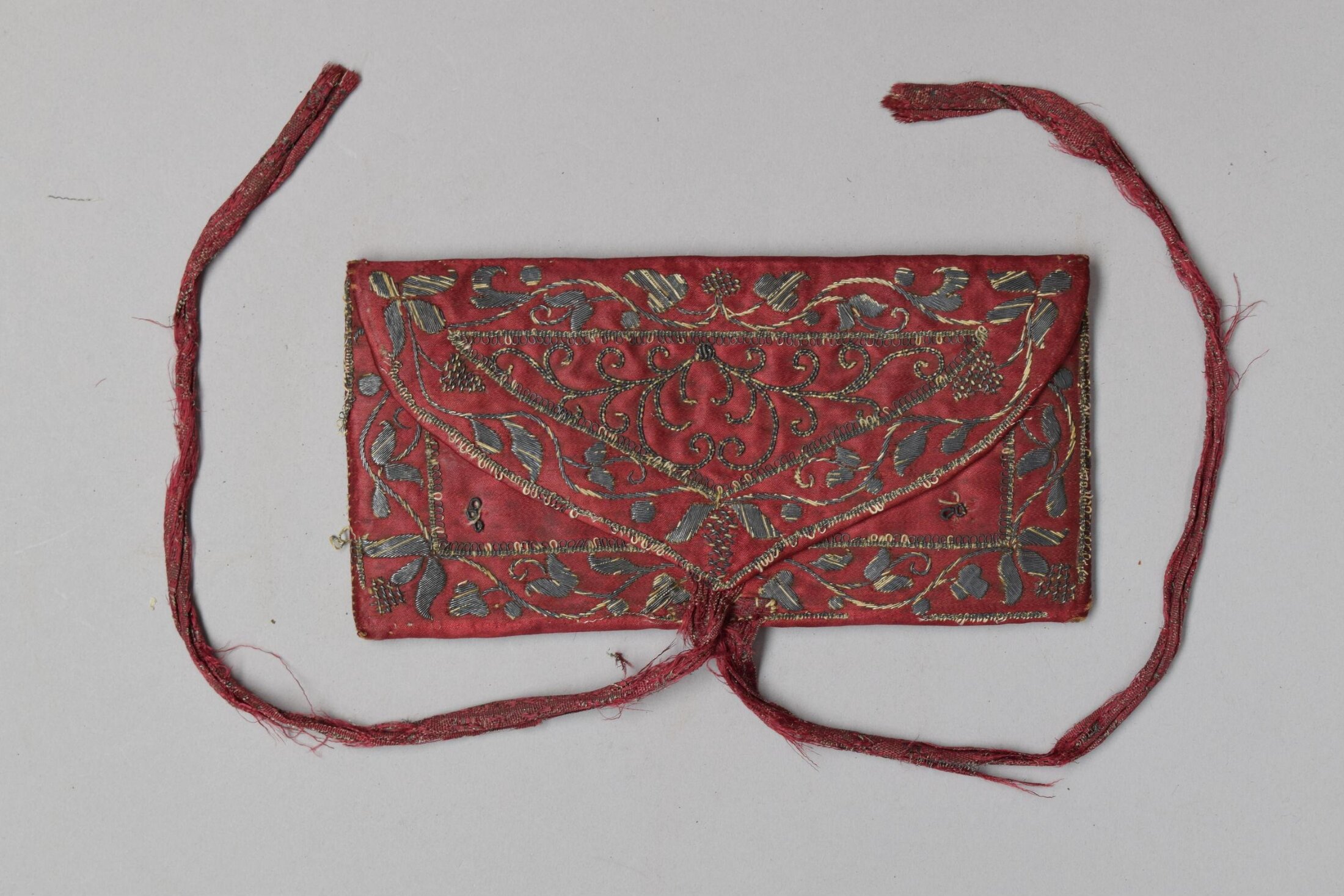
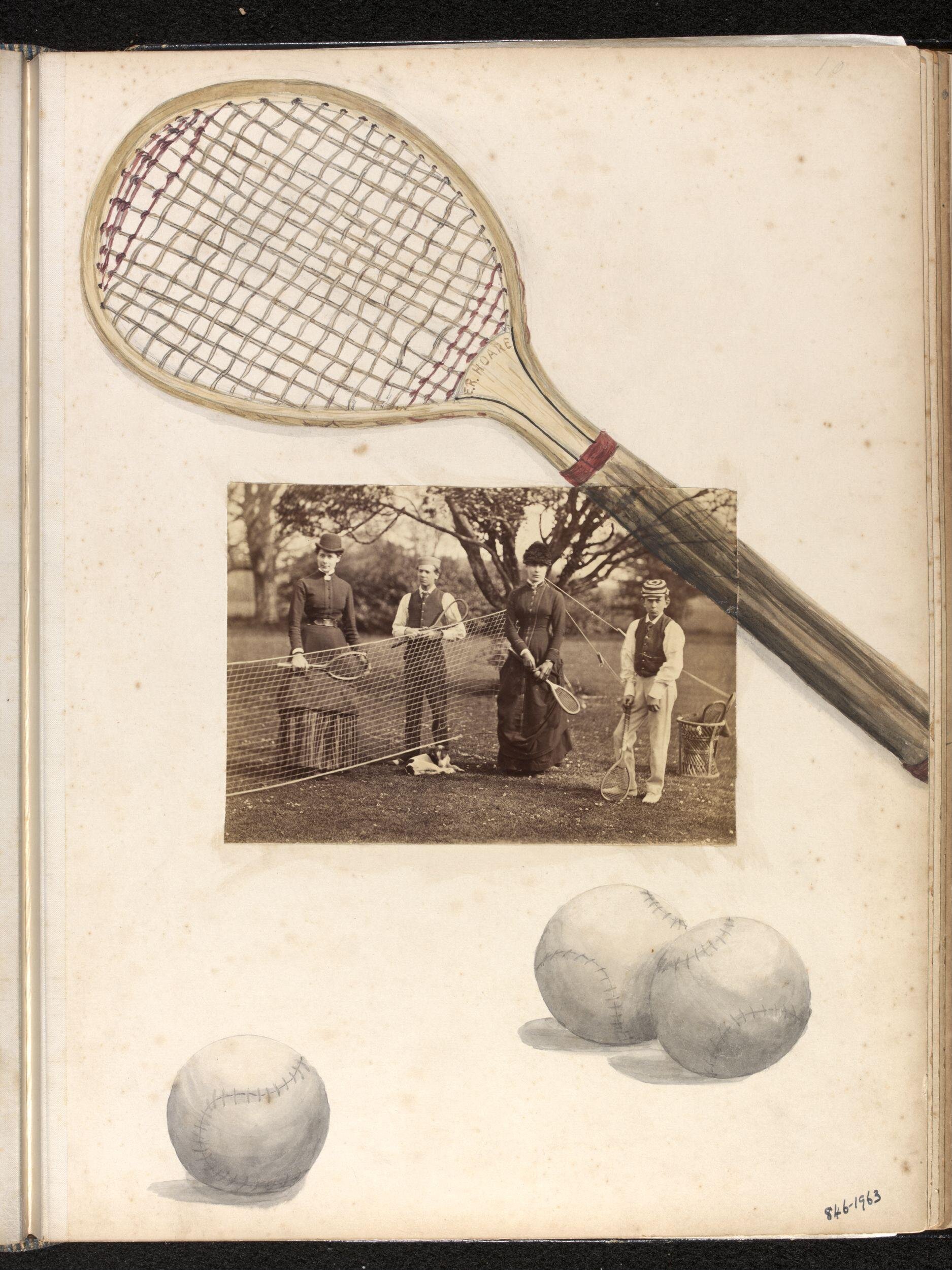
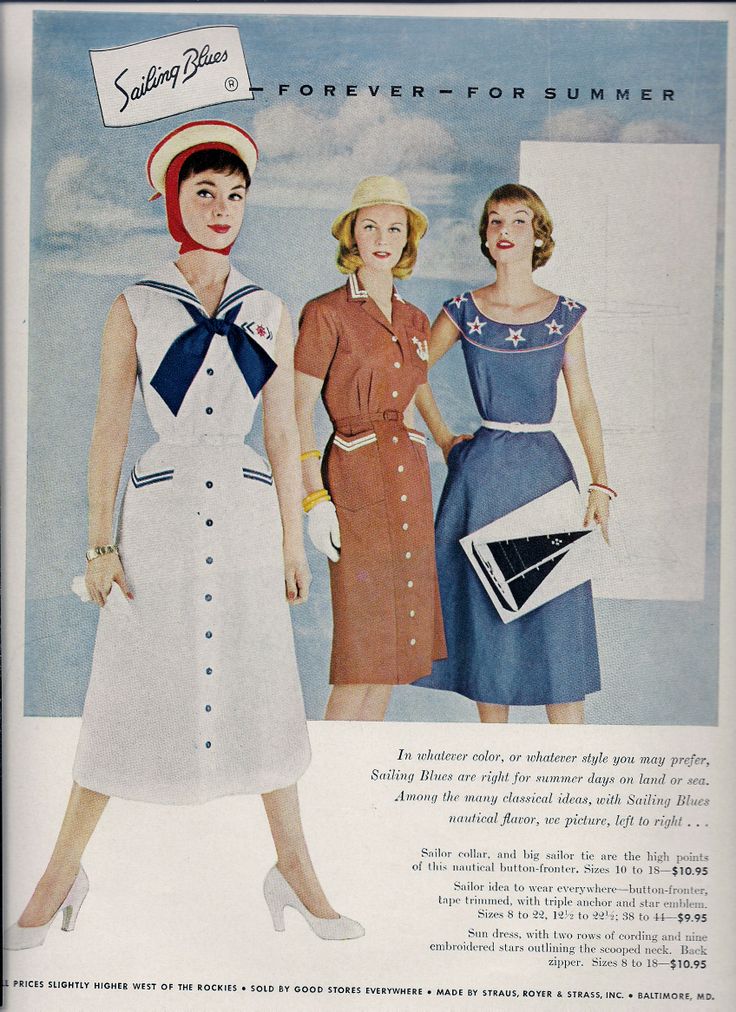
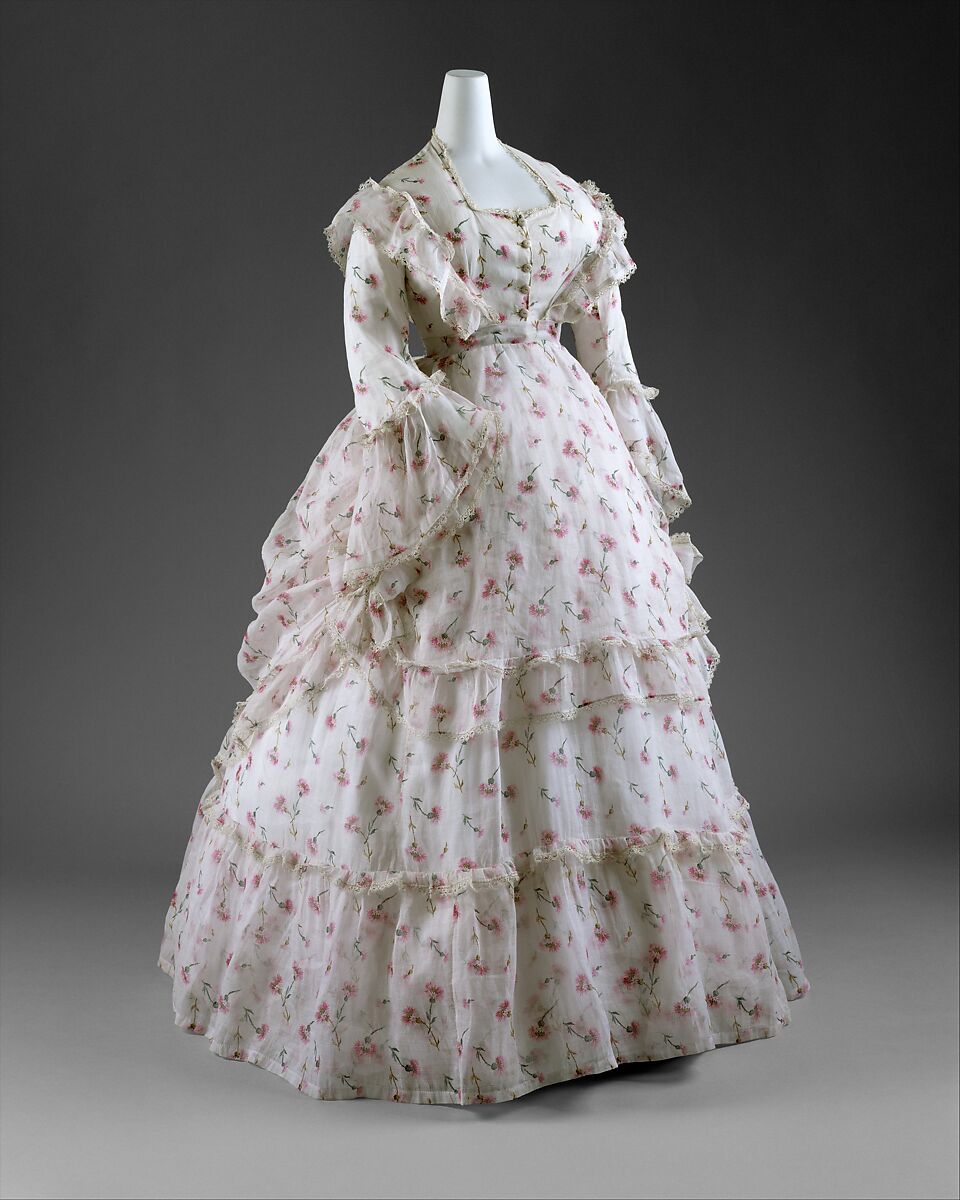
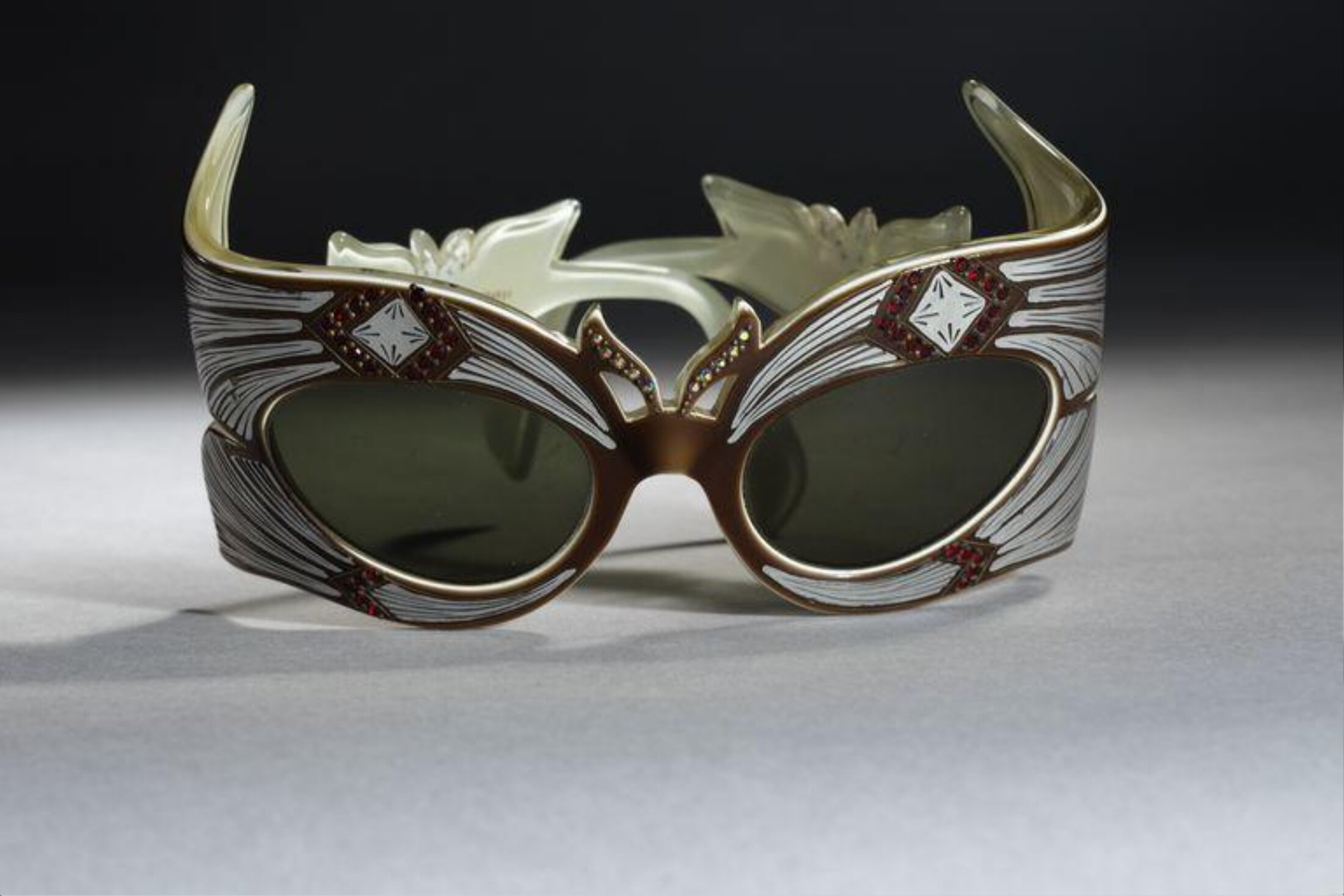
It’s amazing how primitive and on the other hand how elegant a cape/cloak can be. I love them!
Thank you so much for reading, Lesley! I love hearing about capes being worn today. They are so elegant and practical! And I go think a nice poncho can be quite stylish as well.
I love wearing capes which today in my modern clothes they are more of a pancho style is what they are sold as being called . But my wardrobe consists of many of these because where I live in Alabama is does not get too cold in the winter therefore a cape is perfect. . I think these pancho styles as they are marketed as are the modern day capes. I find them less restricting and more comfortable than coats. I do own one Recollections Cape in Black with green satin lining. It’s the Double Tiered Victorian Cape. I love it and wore it for a Christmas Party.
I am so pleased to learn a proper lady owned at least three capes. At least I qualify on one front! It’s a personal goal to own one of your velvet capes.